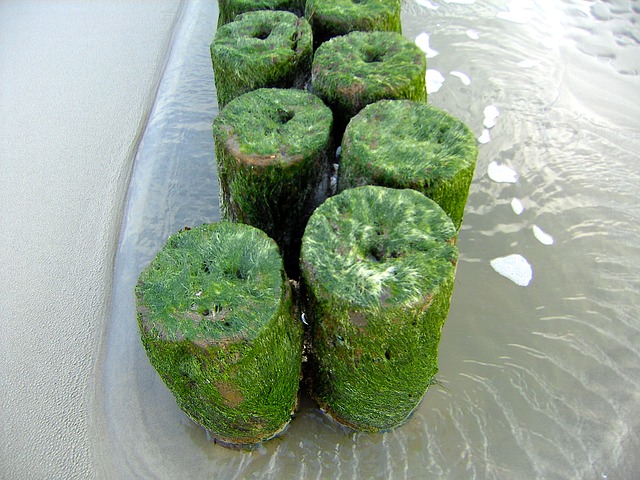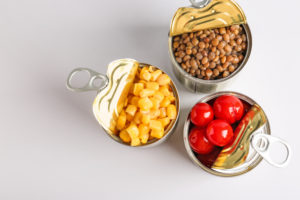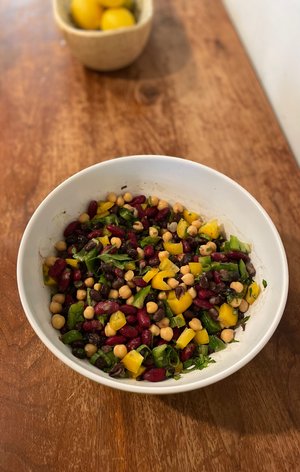
I’m starting a new series of blog posts focusing on food additives entitled “Food Additive Watch.” As much as I tout a whole foods diet, let’s face it, people buy processed products on the grocery store shelves. I do it. You do it. So when we do, how do we make sure it’s a safe choice for our health? I’m in the same boat as you: it can be so confusing scanning labels and ingredient lists. I hope these posts can you help you learn a little more about what is in your food and allow you to better decide what to buy and what to leave on the shelf.
I realize carrageenan has already been all over the news, so you’d think by now most people would have a good grasp of what it is and whether it’s safe or not. Strangely, that’s not the case. Most of the time when I mention the addition of carrageenan to a product, I get asked whether or not they should care. In fact many say they’ve heard of the ingredient but aren’t quite sure what the concern is. Dare I admit I wasn’t sure either?
Yeah, I too saw the rampant reports of carrageenan in the blogospheres and its portrayal as “bad.” However I knew it was derived from seaweed …. So how bad could it be? I thought I should finally figure it out for myself.
Like I mentioned, carrageenan is derived from edible seaweeds. It is a sulphated polysaccharide that has been used as early as 600 BC in China and then later in Ireland and Scotland where it is commonly used as a thickener in many local concoctions. It is now used all over the world. It’s often used in meat and dairy to gel, thicken and stabilize, but it is also used in a host of other products, especially those suitable for vegans or vegetarians.
What was surprising to me is that there are actually 3 types of carrageenan, each with slightly different properties that determines its use in foods. One forms a very thick gel for example, another forms a soft gel, and the other doesn’t gel at all but gently thickens. Because carrageenan is an indigestible polysaccharide, it is technically considered a dietary fiber.
On the surface this all seems very benign. Seaweed and fiber sounds ok to me, and in fact seems a lot more natural than many other chemical additives on the market these days. Even the refining process doesn’t seem terribly complex. There are a few methods used to do this, but all of them include washing and cooking the seawood in hot alkali, then cooking, drying and milling.
There are also two forms of carrageenan: degraded and undegraded. Undegraded carrageenan, or carrageenan as we know it, is the product used in food products. Degraded carrageenan, or poligeenan as it’s called, it not approved for use in foods.
The concerns, it appears, arise from evidence that carrageenan may have adverse effects in our GI tracts and may also play a role in promoting cancer. These issues stem from carrageenan’s apparent ability to stimulate inflammation. Dr. Weil, in his writing on the topic, explained that the drug industry actually uses carrageenan to INDUCE inflammation in order to test anti-inflammatory medications. Additionally a researcher found that mice developed glucose intolerance and impaired insulin after 18 days of “low” dose carrageenan exposure. That’s certainly something to consider.1
BUT, in an article on carrageenan by Chris Kessler,2 he pointed out that most of these studies use poligeenan, NOT carrageenan. This makes a huge difference in how we interpret these studies and outcomes because, as I mentioned, we are not consuming poligeenan in the food supply. Most likely the type of carrageen used by the drug industry to promote inflammation is poligeenan, not the carrageenan we are exposed to in food products.
That being said, there are still some studies that have shown minimal to moderate intestinal damage in animals exposed to large amounts of food grade carrageenan. The Cornucopia Institute, for example, lists several.3 It is theorized that some of the undegraded carrageenan becomes degraded in our GI tracts, thereby making it extremely inflammatory. Alternatively there are other studies showing no damage or very little damage. A recent study involving rats found no damage after 90 days of carrageenan consumption. It seems the science so far is less than clear and the extrapolation to humans even less clear. 4
No studies have been done on humans for obvious reasons, however a few studies have looked at changes to intestinal cells when exposed to food grade carrageenan. Overall it did appear that inflammatory processes were induced and cell death increased (not good), but given that these experiments were all done in vitro, it’s still hard to say how carrageenan reacts in the human body under normal conditions when ingested with food and other liquids.
Clearly I need to do more research on this as there is so much conflicting data, but overall I would recommend using carrageenan sparingly if at all. If you can avoid it then by all means do, especially if you already have GI disorders that might make your system more fragile and vulnerable than others. It’s likely, however, that some exposure here and there might not be the outright travesty on your health that some bloggers would like you to believe. Demonizing the food industry is popular and makes for exciting headlines. Now I’m not one to defend food manufacturers, but I also search for the truth. The truth in this case is we just don’t know. Use in moderation (which means not daily) and support producers who are making their products without chemicals. Better yet, eat a whole-foods diet and you won’t need to worry about encountering these additives. On the flip side, don’t freak out if you ingest a little carrageenan. I think you will be ok.



